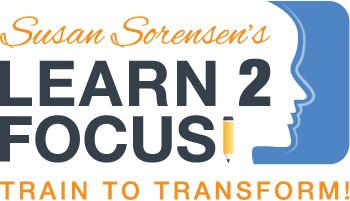How Reflex Integration Can Organize the Brain
/I shared about primitive reflexes last week, and how specific training that focuses on these reflexes can improve neurological learning challenges such as ADD/ADHD, dyslexia, dyspraxia and more. There are two of these training programs that I’d like to talk about today: Quantum Reflex Integration (QRI) and Rhythmic Movement Training (RMT).
Quantum Reflex Integration:
Quantum Reflex Integration (QRI) is an innovative method that targets many primitive reflexes such as the Asymmetrical Tonic and the Moro Reflex. Asymmetrical Tonic Neck Reflex is active up to 6 months old, when it is integrated, and helps develop muscle tone, kicking movements and balancing mechanisms. The Moro Reflex is a primitive reflex that helps the infant hold the correct vertical and horizontal positions of the head for the first two months of life. It should be active only from 2 to 4 months of age before it’s integrated into the brain. There are many of these types of infantile reflexes, and over the next few weeks I will be reviewing some of the more common ones. As I discussed in the previous blog post, if these reflexes are still active when they shouldn’t, they can cause neurological challenges.
QRI combines sound (harmonious frequencies) and light (Low Level Cold Laser Therapy) to revolutionize the way reflexes are integrated. Cold lasers are combined with the integration of primitive reflex patterns via acupressure points and improvements are seen in cognition, behavior, emotional stability and movement. Eye tracking, eye-hand coordination, hand strength and grasping, as well as movement, are often visibly improved in 2 – 3 sessions.
Rhythmic Movement Training
At Learn 2 Focus, I offer a second training program that target primitive reflexes, influenced by Rhythmic Movement Training (RMT). It’s a system of gentle movements and reflex integration activities for developing emotional balance, ease of movement, learning ability and sensory integration. For more than 30 years, these movements have been helping children and adults overcome learning, sensory, motor, emotional, social, mental health, physical and behavioral challenges.
I find the combination of QRI and RMT is particularly useful for children and adults with challenges including ADD/ADHD, dyslexia, coordination difficulties, developmental, speech and learning delays, sensory processing disorders, Autism Spectrum Disorders and many other challenges. In addition, it can benefit those with emotional/behavioral challenges, anxiety and panic.
Children and teens who seem particularly "stuck" or challenged while working through other programs like Interactive Metronome show faster results when QRI and RMT are also incorporated.
For more information, visit www.rhythmicmovement.com.

